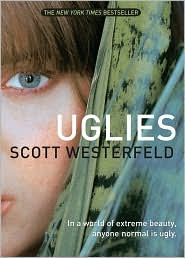
Greenberg, Jan. Side by Side: New Poems Inspired by Art from Around the World. New York: Abrams Books for Young Readers, 2008. ISBN 9780810994713
Summary:
Side by Side is a collection of poems about art from around the world. Poetry inspired by art is also known as ekphrasis. Most of the poems were written especially for this book. Each poet was asked to write a poem in their native language about a piece of artwork in their native country. Poems written in other languages were translated into English. Thirty-three countries and six continents are represented through poetry, translation, and art.
Analysis:
Greenberg appeals to teen readers through a mixed media of art and universal themes in poetry such as nature and childhood memories. She also invites the reader to keep a notepad close by and write their own response to the art, therefore involving them in the book. Greenberg divides the poems into four categories: Stories, Voices, Expressions, and Impressions. In Stories, the poet looks at the art and imagines a story. In Voices, the poet becomes the subject of the artwork and speaks as the subject. In Expressions, the poet depicts the interaction between the artwork and the viewer. In Impressions, the poet describes the elements of the artwork, such as lines, symmetry, color, etc. VOYA says, “they perform an engaging duet of words and visuals on the page.”
Reviews:
School Library Journal 2008
"It creates cultural bridges and celebrates the genius of inspired translation."
Booklist 2008
"...the moving, often startling poems invite readers to savor the words and then look closely at each image."
Awards:
Booklist starred review
IRA Notable Book for a Global Society 2008
Connections:
For more information about the author visit http://mowrites4kids.drury.edu/authors/greenberg/
For a virtual tour of an art gallery visit http://www.wga.hu/
For an interactive world map visit http://globalis.gvu.unu.edu/
If you liked this book, you might enjoy:
Revenge and forgiveness: an anthology of poems by Patrice Redd Vecchione
Poetry U.S.A. by Paul Malloy
Ego-Tripping and other poems for young people by Nikki Giovanni
Edgar Alan Poe by Edgar Allan Poe
Here in Harlem: poems in many voices by Walter Dean Myers
A wreath for Emmett Till by Marilyn Nelson
Picture:
http://search.barnesandnoble.com/booksearch/imageviewer.asp?ean=9780810994713&imId=28598063









